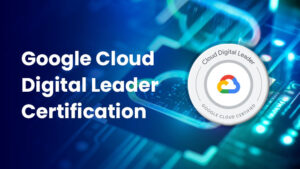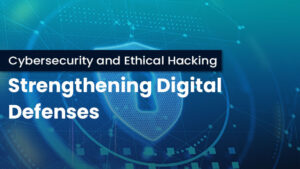Introduction
Email security protects email communication and prevents unauthorized access, interception, or manipulation of email messages. Email is a popular method of communication in both personal and professional settings. As such, attackers often target it to steal sensitive information, spread malware, or conduct phishing scams. This article covers detailed knowledge of Email Security.
Types of Email Threats
Several types of email threats can compromise email security. Some of the most common email threats include:
- Phishing: This is a form of social engineering in which attackers send bogus emails appearing to be from trustworthy sources such as banks or other organizations in order to fool victims into providing personal information such as passwords, credit card information, or login credentials.
- Malware: Attackers can attach malicious software, such as viruses or Trojans, to email messages, which can infect a user’s computer or network if the attachment is opened.
- Spam: Unsolicited emails, often sent in bulk, can clog email inboxes and make it more difficult to identify legitimate messages.
- Denial of Service (DoS): Attackers can flood a user’s email inbox with many emails, overwhelming the server and preventing the user from accessing legitimate emails.
- Man-in-the-Middle (MitM): In a MitM attack, attackers intercept email messages and alter the content of the messages or insert malware without the sender or recipient being aware of the interception.
- Email Bombing: Attackers can send many emails to a single user, overwhelming the inbox and causing a denial of service.
- Business Email Compromise (BEC): This is a type of scam where attackers use social engineering tactics to impersonate a trusted source, such as a CEO or a supplier, to trick employees into transferring funds or sensitive information to the attacker.
Overall, these email threats pose significant risks to email security, and it is important to implement appropriate email security measures to protect against them.
The Benefits of Email Security
Implementing email security measures can provide several benefits, including:
- Protection of Sensitive Information: Email security measures such as encryption can help protect sensitive data in transit and prevent it from being accessed by unauthorized users.
- Reduced Risk of Cyber Attacks: Email is a common target for cyber attacks such as phishing, malware, and ransomware. Implementing email security measures such as spam filters, antivirus software, and employee training can help reduce the risk of successful attacks.
- Business Continuity: Email is a critical communication tool for many businesses, and a breach or outage can significantly impact productivity, reputation, and revenue. Email security measures help prevent disruptions to email communication and ensure business continuity.
- Compliance: Many industries and government regulations require organizations to implement specific email security measures to protect sensitive data and maintain compliance with applicable laws.
- Improved Reputation: Successful email attacks or data breaches can damage an organization’s reputation and erode customer trust. Strong email security measures can help prevent these incidents and protect the organization’s reputation.
- Increased Productivity: Spam filters, autoresponders, and other email security measures can help reduce the volume of unwanted or irrelevant emails, allowing employees to focus on important messages and tasks.
Overall, implementing email security measures can provide several benefits, including protection of sensitive information, reduced risk of cyber attacks, improved business continuity, compliance with regulations, improved reputation, and increased productivity.
Why is Email Security Important?
For more than 20 years, email has been the main form of communication in the office. Employees receive an average of 120 emails per day, with daily global email traffic exceeding 333 billion. This presents a chance for cybercriminals who use malware, phishing schemes, business email compromise attacks, and a variety of other techniques to take crucial data from companies. Ninety-four percent of hacks start with a malicious email. According to the FBI’s Internet Crime Complaint Center (IC3), corporate email compromise will cause the most damage from cybercrime, costing more than $4.1 billion in 2020. The repercussions could be disastrous, causing enormous money, data, and image losses.
Email Protection
To protect your email from threats, there are several measures you can take:
- Two-Factor Authentication (2FA): To add an extra degree of security to your email account, enable two-factor authentication. 2FA requires users to provide an additional form of identification, such as a fingerprint or a code sent to a mobile device, in addition to the password.
- Email Encryption: Use email encryption to protect messages and attachments in transit. Email encryption uses a cryptographic key to scramble the contents of the email so that the intended recipient can only read it.
- Spam Filters: Use spam filters to automatically block or move unwanted and potentially harmful emails to a separate folder.
- Antivirus And Anti-Malware Software: Install and keep up-to-date antivirus and anti-malware software on your computer to defend against malware and viruses that may be attached to email communications.
- User Education: Train users on email security best practices, such as identifying suspicious emails, avoiding phishing scams, and keeping software updated.
- Regular backups: Back up crucial emails and data regularly to avoid data loss in an attack.
By taking these steps, you can significantly improve the security of your email and protect against potential threats.
Types of Email Security Services
Email security services assist businesses in defending email accounts and communications against online dangers. The best method for businesses to implement email security is to develop and uphold a policy for email use and distribute it to the staff, so they are aware of email security best practices. Typical email security services that are accessible to people, businesses, communities, and organizations include:
- Detonation features that analyze all emails, including internal and external, for harmful links and attachments.
- To prevent cybercriminals from intercepting mail messages, use data encryption.
- Image and content management features can check attached or embedded images and content for malware and prevent downloads.
- Filtering spam and other unwanted correspondence with spam filters.
- Tools for authenticating senders to determine their reliability.
Email Security Tools
Organizations can manage and enhance their security stance with email security tools and services. These are some examples of these tools:
- Platforms from integrated online email service providers: Users can access an integrated collection of email security features through Microsoft Exchange Online, a Microsoft 365 Business Standard suite component. Similarly, Google Workspace provides a Gmail version backed by businesses and includes email security as a built-in feature. Microsoft and Google services offer choices for encrypted data transit and integrated anti-malware and antispam features.
- Email security gateways: It can act as an inspection point for malware, spam, and phishing efforts for businesses that use both on-premises and cloud-hosted email systems. Many companies sell email security proxies, including Barracuda, Cisco, Forcepoint, Fortinet, Mimecast, Proofpoint, and Sophos.
Future of Email Security
The future of email security will likely be shaped by a range of new technologies and trends, including:
- Artificial Intelligence (AI): Artificial Intelligence (AI) can be used to analyze email data and detect patterns of questionable behavior such as phishing campaigns, malware, and other risks. AI can also help to automate responses to these threats and improve the efficiency of security processes.
- Blockchain: Blockchain technology can provide secure and decentralized email systems with encrypted and tamper-proof messaging and identity verification features.
- Cloud-Based Security: Cloud-based email security solutions can provide advanced protection against emerging threats, with automatic updates and scalable infrastructure to handle large volumes of email traffic.
- Multi-Factor Authentication (MFA): MFA solutions will continue to be widely adopted, with biometric and behavioral authentication techniques providing additional layers of security for email accounts.
- Improved Encryption: Encryption technologies will continue to evolve, with more user-friendly and accessible options for end-to-end encryption and greater interoperability between different encryption systems.
- Greater User Awareness: As cyber threats become more sophisticated, there will be a growing need for greater user education and awareness of email security risks, with ongoing training and support to help users stay updated with the latest threats and best practices.
Conclusion
Email security is a critical concern for individuals and organizations as cyber threats evolve and become more sophisticated. By implementing strong passwords, two-factor authentication, email encryption, spam filters, antivirus and anti-malware software, sender authentication, regular backups, and user education, it is possible to significantly improve email security and protect against a range of threats, including phishing, malware, spam, spoofing, and denial of service attacks.
In the future, new technologies such as artificial intelligence, blockchain, and cloud-based security solutions will likely play a larger role in email security, with an increasing focus on automation, user awareness, and education.







